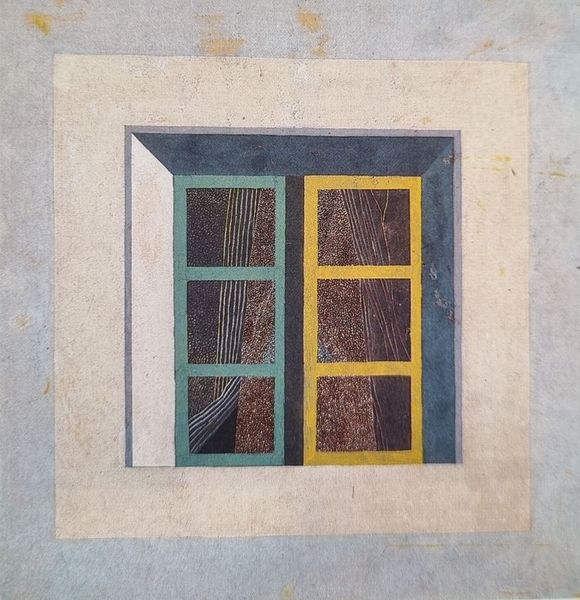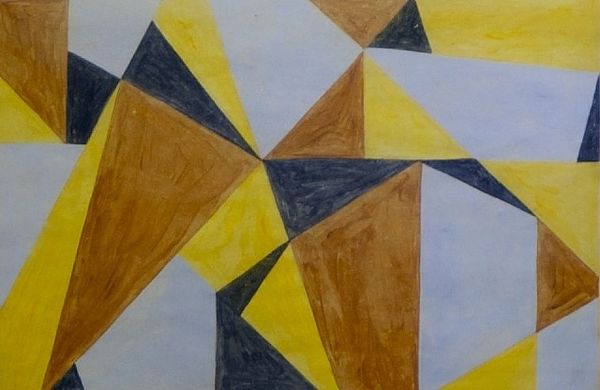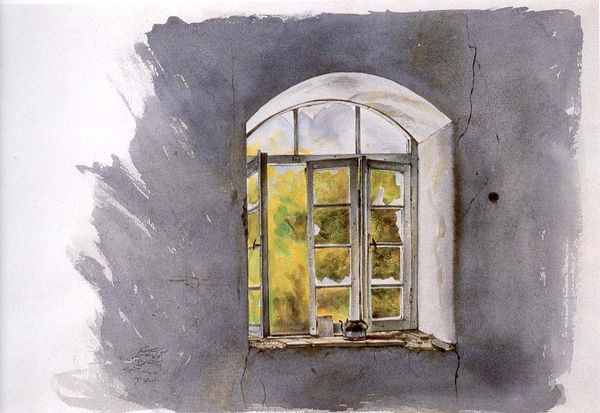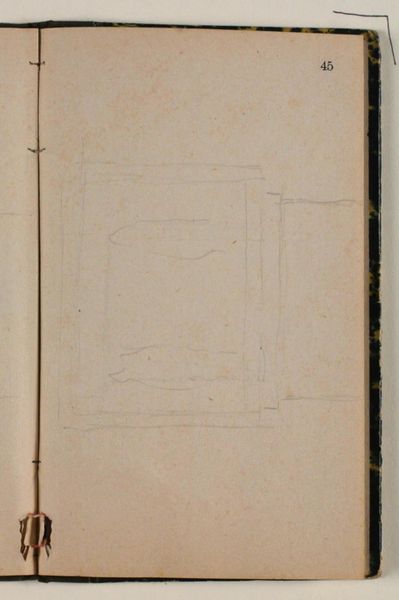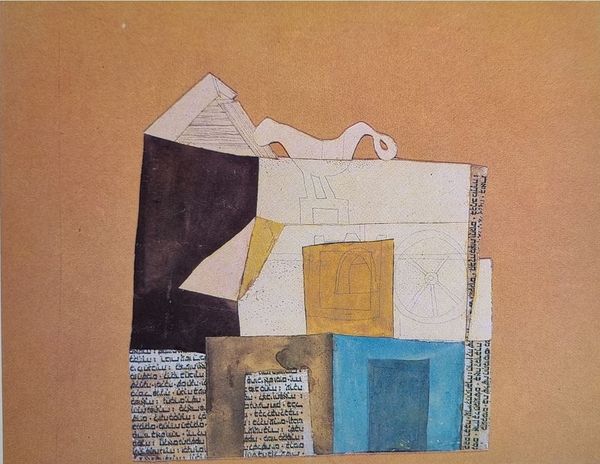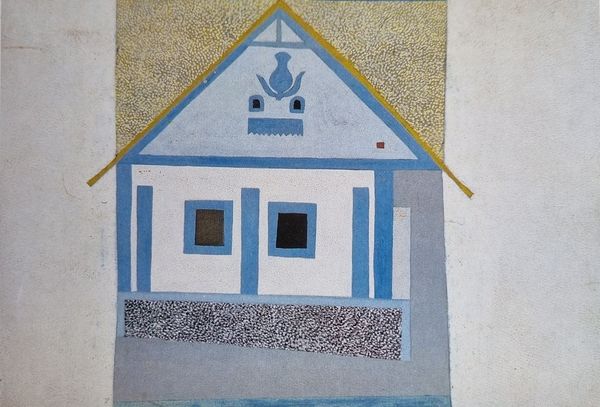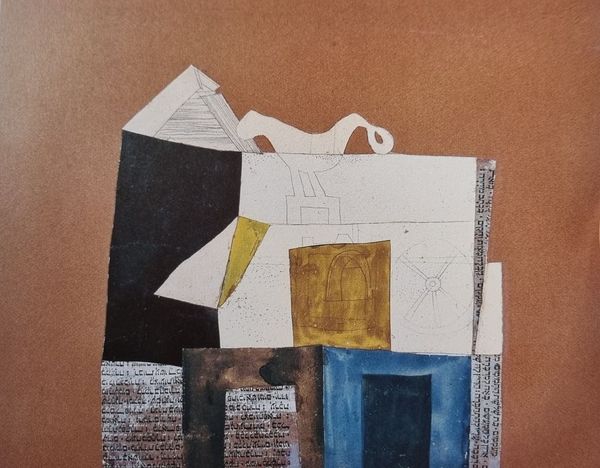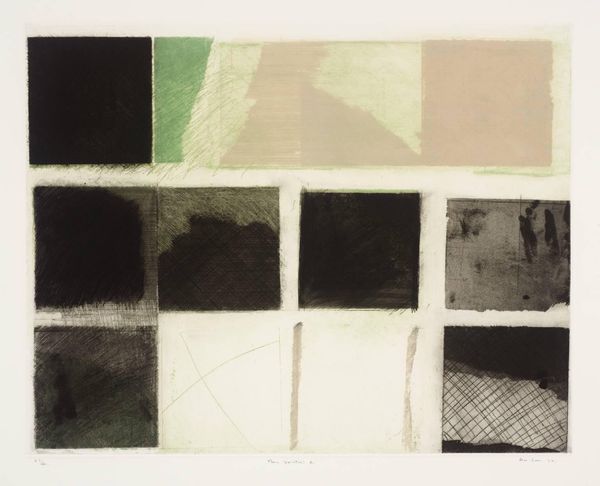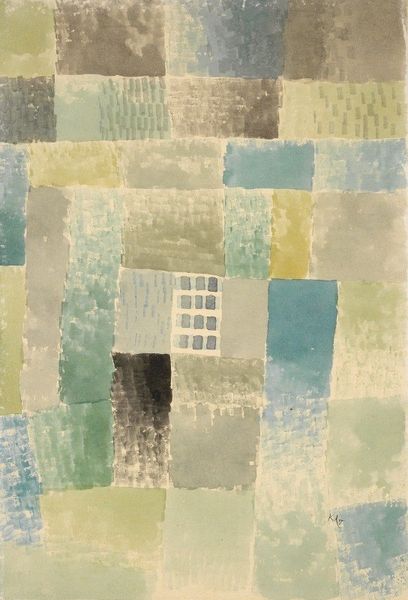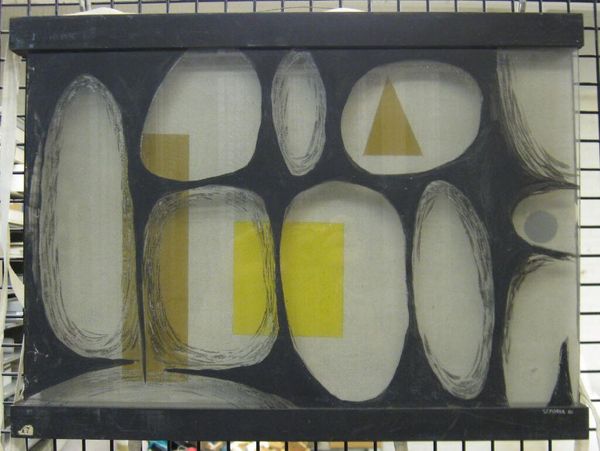
drawing, mixed-media, tempera, paper
#
drawing
#
mixed-media
#
tempera
#
paper
#
geometric
#
painterly
#
abstraction
#
mixed media
#
modernism
Copyright: Public domain
Curator: Welcome. Before us is Lajos Vajda's "Windows on Szigetmonostor," a tempera on cardboard piece from 1935. It’s a rather small work, 45 by 45 centimeters. Editor: The first thing that strikes me is how the green and yellow of the window frames pop against the muted gray surround. It feels like looking into a fragmented memory. Curator: Vajda's work often reflects his grappling with identity and place. This painting emerged from a period when he was deeply involved with exploring the rural landscapes of Hungary and his Jewish roots. The window, as a motif, could be interpreted as a liminal space, reflecting his position between cultures and artistic styles, modernism against the traditional. Editor: Right. You see it in the very texture. The way he’s applied the tempera suggests a real interest in the surface, the build-up. It's not just about representing a window; it's about the physical act of applying paint and how that relates to constructing our reality. This materiality emphasizes the window less as a view onto something real and more as a fabricated threshold, a made object. Curator: And consider Szigetmonostor itself, a small island village. Vajda wasn't merely painting a window; he was engaging with a specific locale and its community. It touches on how art can reflect and shape perceptions of place. Who belongs and who is an outsider looking in? Editor: Absolutely. Think of the social implications of 'window' as material—as a frame bought, installed, paid for, maintained by someone in a particular time and place. These are humble materials, nothing grand or traditionally "artistic," but the labor behind them tells a story. What’s obscured, or privileged through the windows—how do material limitations of Vajda's canvas speak? Curator: It’s interesting to think about that period, 1935, and the rise of fascism across Europe. Did that backdrop affect how he approached questions of home, belonging, and visibility, especially considering his identity as a Jew within that tumultuous historical landscape? The composition hints to interior lives, or possible escapes, using abstract lines, dots, and color. Editor: True, but by bringing a close-looking to the materials of the era as mundane as the paints themselves or the way paper’s weave absorbs those strokes, opens us toward understanding something more nuanced and perhaps politically challenging to historical and critical art theory in Vajda's time. Curator: Indeed. Ultimately, Vajda gives us not just a picture of a window, but a portal for considering identity and its constant negotiation within history, location and societal forces. Editor: Well said. A potent reminder that what we perceive through even the simplest means, whether a window or a painting, is fundamentally tied to how we make and consume art within its material construction.
Comments
No comments
Be the first to comment and join the conversation on the ultimate creative platform.
